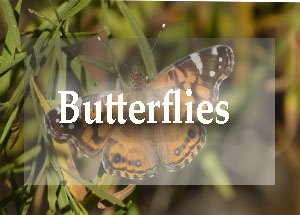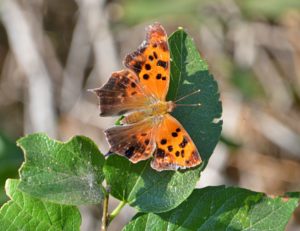
Llano Estacado Texas Master Naturalists (LETMN) participate in North American Butterfly Association (NABA) counts in partnership with Midland Naturalists. We are part of a Citizen Science Butterfly Monitoring Program. There are regular butterfly walks at I-20 Wildlife Preserve where LETMN has created a beautiful Butterfly Garden for all to enjoy and to help our declining butterfly populations. You can join any of these activities or volunteer to help maintain the LETMN Butterfly Garden at I-20. Read about the history of the I-20 Butterfly Garden in the next section.
I-20 Wildlife Preserve Salehi-Olgin Butterfly Garden
In the southwest corner of Midland, the I-20 Wildlife Preserve can be found nestled amongst an industrial oil field setting. Encompassing eighty-six acres of the 100 acres Preserve, is the 12th largest playa in Midland County. Playas are ephemeral wetlands which dot the High Plains. Playas are critical for recharging the Ogallala Aquifer and serve as intermittent wetlands for migrating birds and other species. In the past, the structure and importance of playas was poorly understood, resulting in many playas being filled in with soil, plowed and planted or simply ignored to be overrun with invasive species. The importance of playas to Native Americans and the animals they hunted cannot be overstated. In an area that receives very little rainfall per year (14” is the normal for Midland), the Midland playa would be seen as an oasis on the short grass prairie. With the advent of settlers coming to the Midland area, a railroad was laid, and cattle were brought to the playa to graze then shipped to Ft Worth or Kansas City.
The I-20 Wildlife Preserve Butterfly Garden was planted in a former cattle pen. Many members of the Llano Estacado Chapter of Texas Master Naturalists had input into the butterfly garden’s inception and design and continue to care for this garden today. Many of the corner posts in this garden are original posts used to build the pen when cattle were brought to the playa to graze from 1906 to the 1960s. In 2014 construction began with digging post holes for fencing and grading the garden. With the abundance of rabbits in the Preserve, a rabbit proof fence was necessary to ensure that future plantings would survive. Once fencing was complete, pathways were constructed, and plants beds laid out. Irrigation lines were installed next, with water supplied from a 500-gallon tank. I20 Wildlife Preserve does not use electricity, so the pump to fill the 500-gallon tank is powered by two sets of solar panels.
Plants in the Butterfly Garden were chosen for their drought tolerance and ability to attract local and migrating pollinators. Llano Estacado TMN members host workdays to weed and tidy up the beds, repair any irrigation leaks, and give a little extra water to the plants during times of extreme heat or lack of rainfall. Members are always happy to answer questions about plants and pollinators to visitors who come to the garden. Children are especially fascinated by the large Queen butterflies during the summer and the Monarchs during migration. Members have hosted butterfly counts through NABA (North American Butterfly Association) in the garden and throughout the Preserve. Species commonly observed are Admirals, Blues, Checkerspots, Crescents, Fritillaries, Hairstreaks, Metalmarks, Snouts, Swallowtails, Sulfurs, Whites, and many Skippers. Check out the I-20 Wildlife Preserve and plan your visit to the Butterfly Garden!
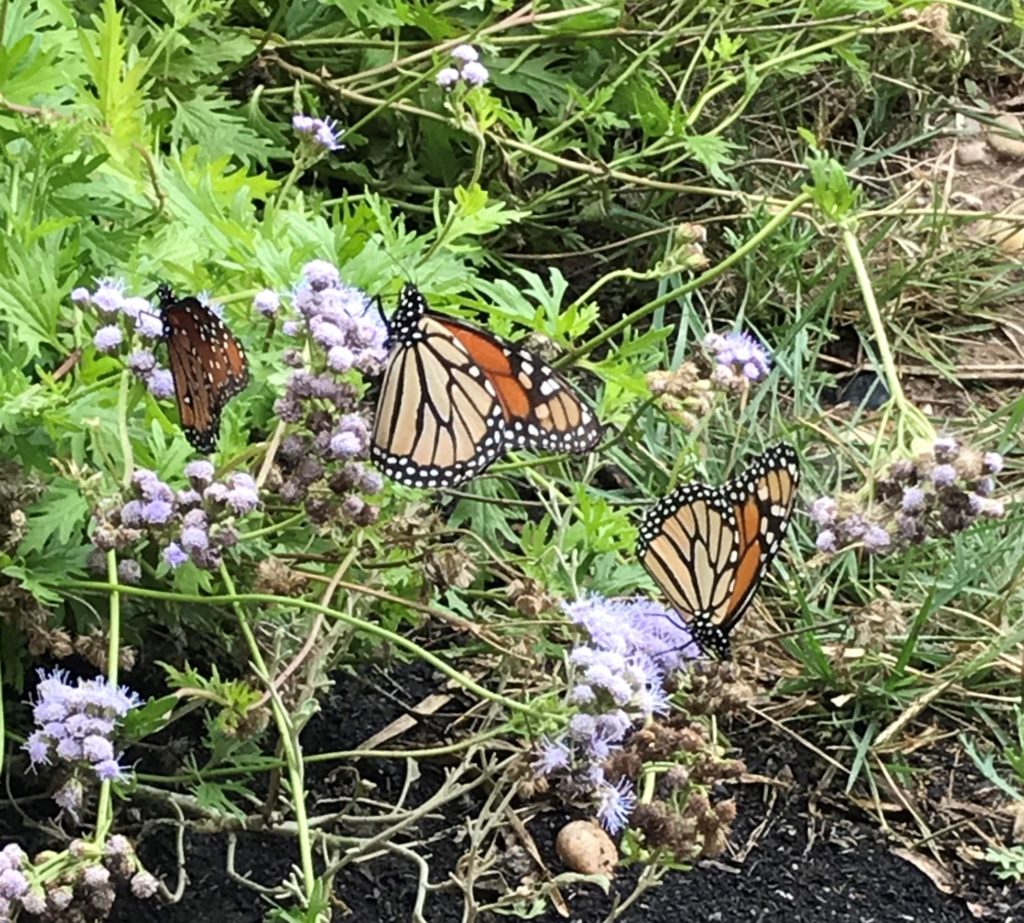
Monarchs on Blue Mist Flower 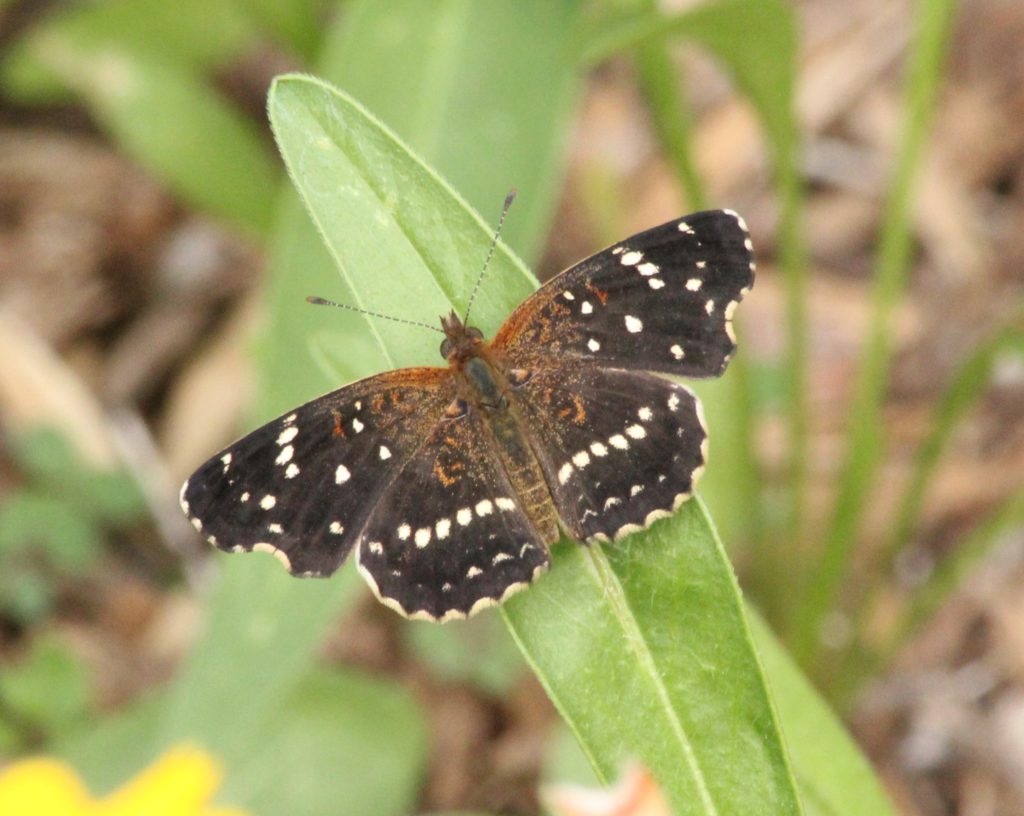
Texan Crescent 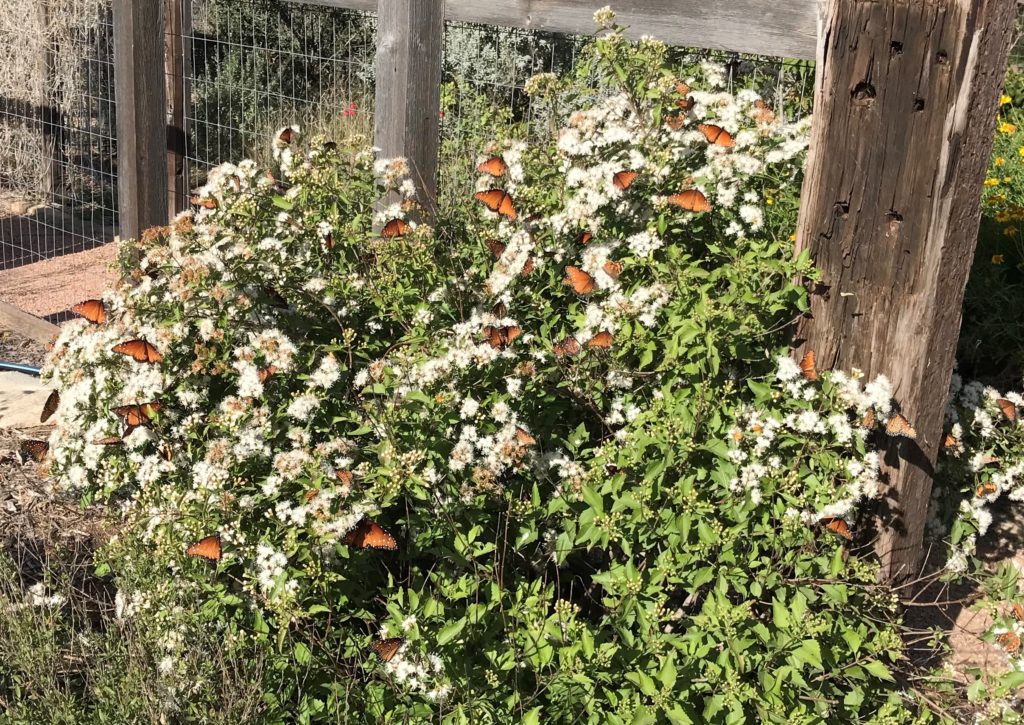
Queens on White Mist Flower
